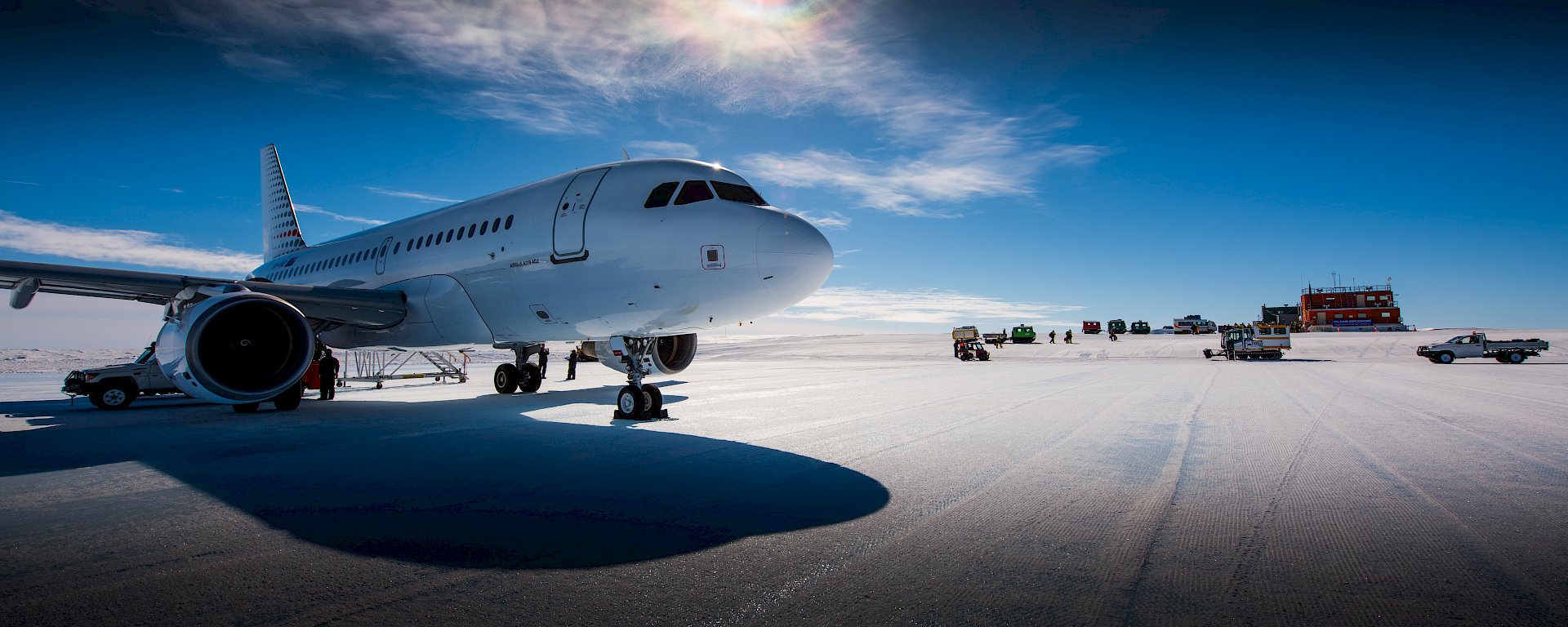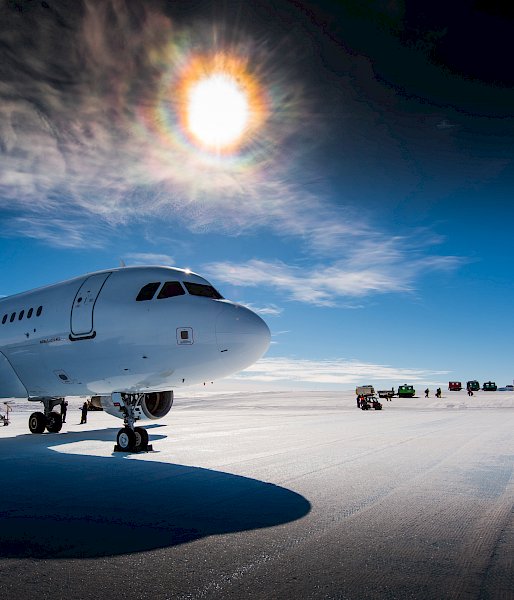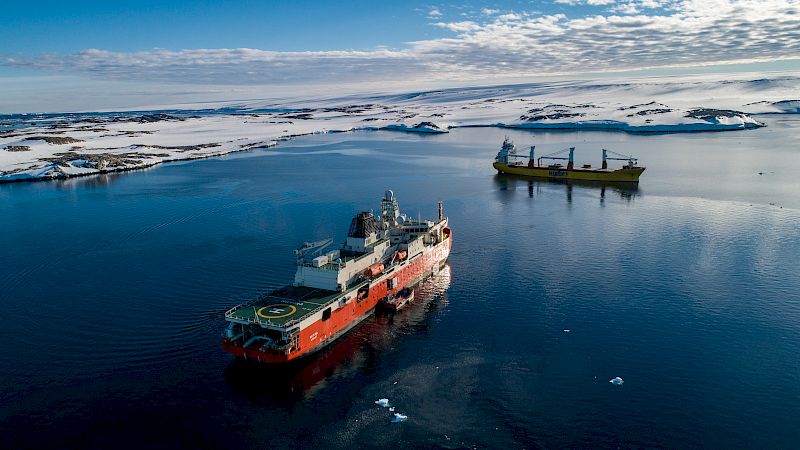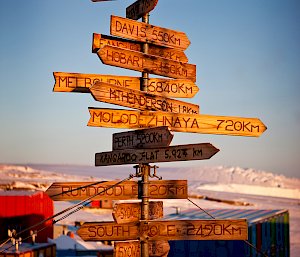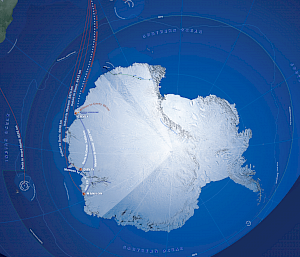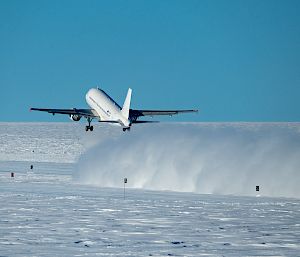Australia has three year-round research stations in Antarctica: Casey, Davis and Mawson, and one on sub-Antarctic Macquarie Island. The population of the stations ranges between 40 and 120 expeditioners over summer and 15 to 25 people over the harsh winter months. Each season more than 500 expeditioners travel south with the Australian Antarctic Program.
Antarctica is the most remote and challenging part of the planet. The Australian Antarctic Program has air and sea transport to get expeditioners south and enable them to travel around the continent. The logistical support also ensures the program can undertake marine, ice and aviation-based scientific research and resupply our stations.
On the ocean, Australia’s icebreaker the RSV Nuyina (noy-yee-nah) delivers expeditioners, cargo and fuel to the stations between October and April each year. RSV Nuyina also has extensive science capabilities to conduct research, and is supported by other chartered vessels as required by the Program.
In the air, long range aircraft fly people and cargo between Hobart and Wilkins Aerodrome, near Casey research station. The 3.5 kilometre glacial runway operates over the summer months, from October through to March. Smaller planes and helicopters fly between our research stations and field sites.
Read more about Antarctic aviation and the logistics of travelling on a ship voyage.

